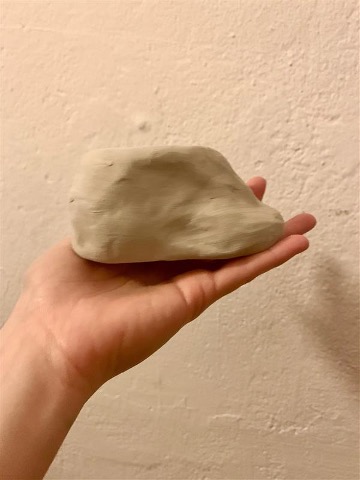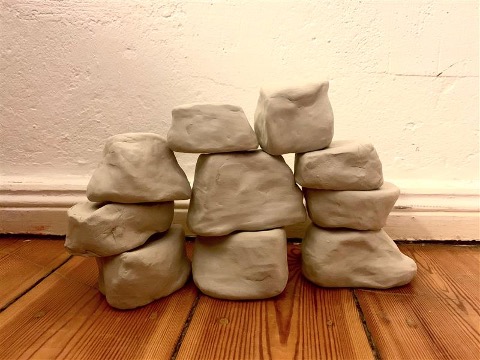A project by Deborah Holtz, Tilia Dahlke and Saskia Schäfer,
University of Europe for Applied Sciences Berlin
with Prof.* Katharina Mayer
The foundation of our project is based on the book “Stone, Paper” by Tomer Gardi. The book reflects on his life, the Third Reich, the Holocaust, and the Palestinian displacement in the establishment of Israel. Tomer Gardi grew up in a Kibbutz in the north of Israel. He later discovers that the Kibbutz’s museum was built from the stones of a destroyed nearby Arab village. As he dives deeper into the history of how this came to be, immoralities and injustices by the Israelis towards the Palestinian-Arabs from this region are revealed. This narrative gives a raw, honest interpretation of the ongoing conflict between Israeli’s and Palestinians by convicting the readers to the reality of a nation that has hidden its crimes against humanity.
To this day, the burden of this conflict rests on the shoulders of the people in both nations nationally and of those internationally. The main objects in his book are stones and paper. Stones symbolize the homes, walls, or bridges we build, representing both destruction and creation, the simultaneous problem and solution. Paper with words people contain and share; stories and events documented to preserve, separate, or reconcile.
Our central idea is to put these objects in the focus of our project. We want to make an exhibition based on the correlation of the German, Israeli and Palestinian connected history and future through bridges and walls we build and the words we give. We plan to record and document the narratives of the three nations on the topic of home, separation, and conflict between Jews and Arabs. Through reflective symbolism and step-by-step live interaction, we will project the narratives through video, text, and image installations while having written paper statements and clay rock wall structures around to give further interpretation to the present roles we play.
We want to give each participant the chance to be a physical part of the project by putting their stories into stone and paper. The participant will talk with us about their narrative while they build a stone with clay. Afterward, they will write on paper their thoughts. We will ask them to place the paper however they want with the stone. The paper will then become a part of the stone and wall structure as they present their past, present, and future. Upon this we build the foundation, and it is up to the participant to form what that structure looks like.
What would you do with a stone? Would you use it to build a home? For walls to separate or as a weapon to destroy the wall? Would you rebuild what was destroyed, stolen? Would you carry it up a mountain with someone whose nation caused you deep injustice? Or would you carry the burden of tons of stones on your back for your neighbor to feel weightless from pain as you walk together to justice and freedom? Would you build a bridge to the next mountain together as a family?


